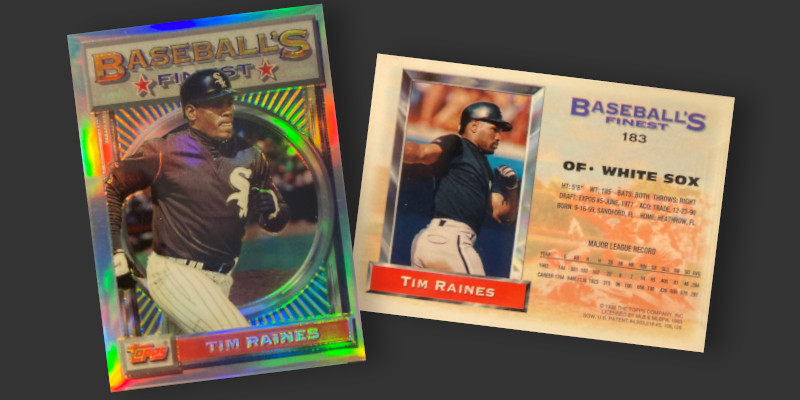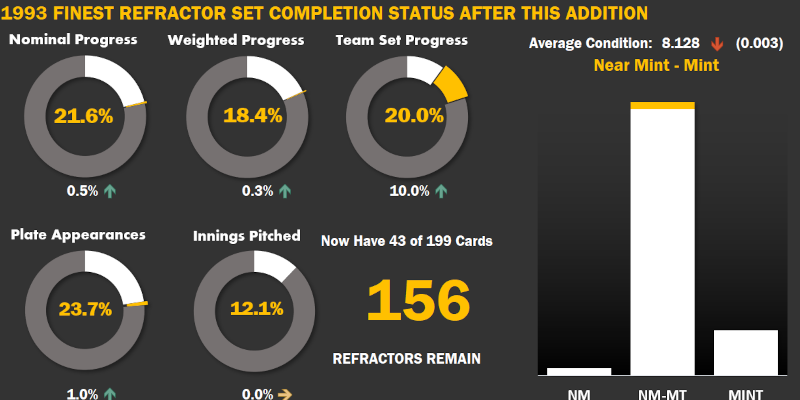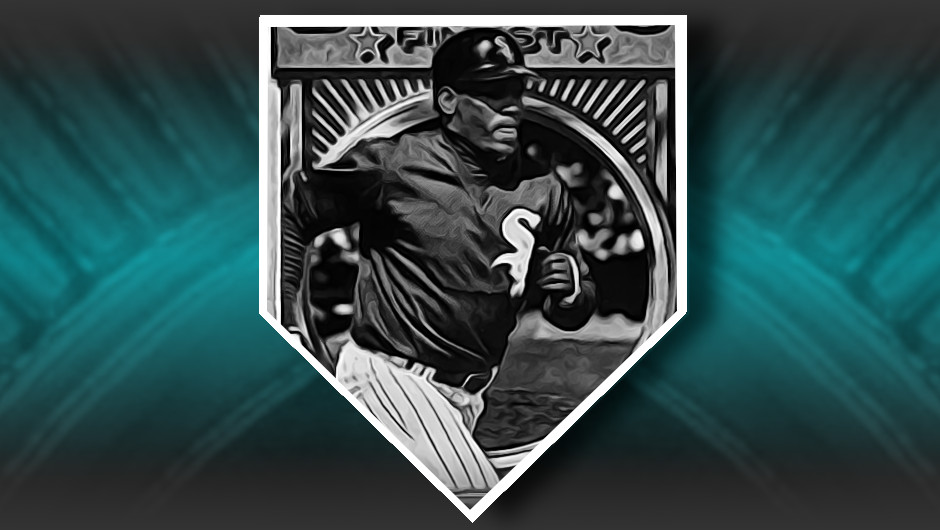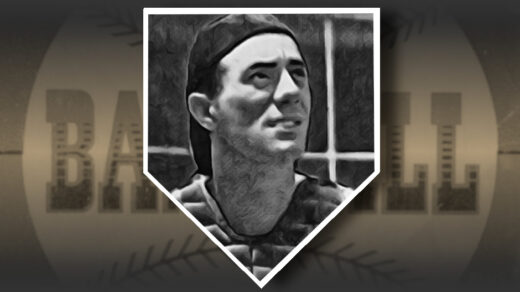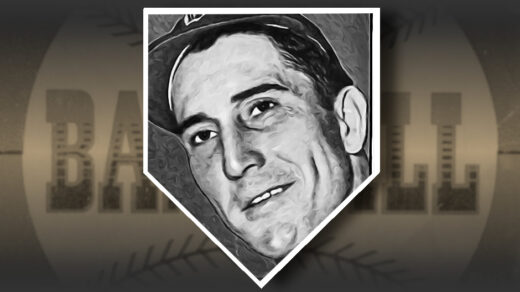Who would have been the home run king if Babe Ruth never existed and the sport still made the transition to the live ball era? At the end of Ruth’s last season in 1935, the title would have been held by teammate Lou Gehrig with 378, a full 20% beyond second-place Jimmie Foxx. Foxx would eventually surpass Gehrig in 1940 and would be the hypothetical HR king until Willie Mays hit number 535 in 1966. Hank Aaron caught up with Mays in the 1971 season and would hold the title until Barry Bonds hit #756 in 2007.
Without the shadow of Ruth, each of the names with less than 714 HRs would have carried even larger stature in the sport. Opponents and fans alike knew Gehrig, Foxx, and Mays were fantastic, but they were never the absolute kings of the sport in the way Ruth was.
Tim Raines would have been the greatest lead-off hitter of all time had he not found himself in just such a shadow. There is a baseball card that single-handedly describes his career. Issued as card #164 in the 1982 Topps set, it highlights the reigning stolen base champions of each league. Raines is pictured on the left, joined by Rickey Henderson on the right. That side-by-side comparison would remain for two decades with Raines’ career overlapping with ~90% of Henderson’s. The latter’s 1,406 stolen bases is more than 50% higher than the second highest total, completely capturing the imagination. Like Ruth, Henderson had a bigger-than-life personality that left little of the spotlight for other players.
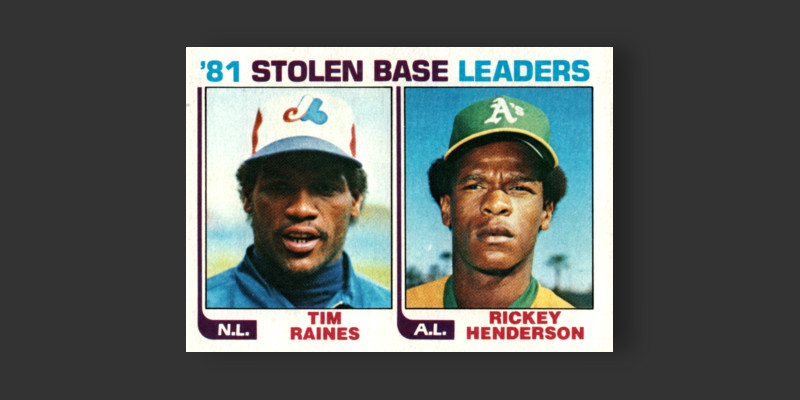
But what if Henderson never existed? How would Raines stack up? For starters, he had 2,605 hits in a 23-year career, the same tally as fellow Hall of Fame leadoff hitter Rabbit Maranville. Pitching matchups had no effect on Raines, who batted .294 against righties and .293 against lefties. When he got on base, which was often, he was a terror on the base paths. Raines stole 808 bases, a figure that would have placed him 4th on the all-time leaderboard sans Henderson. His walk rate of more than one base on balls per 8 plate appearances stands near the top of the leaderboard. 1,500+ career runs look good as well. He generated a consistent wRC+ of more than 130 in the 1980s and surpassed all but a handful of middle of the order sluggers in terms of WAR.
You don’t need to hypothetically erase Henderson from the record books to appreciate Raines. By looking at their rate stats it becomes apparent that he could more than hold his own against the stolen base king in multiple areas. For starters, it should be noted that Raines has the higher SB total of the two on their 1982 Topps League Leaders card with a total of 71 vs. 56. Raines was also a rookie and his 71 steals set a Major League record for newcomers. These 71 SBs came in only 88 games in a strike-shortened season, implying a162-game pace of 131. This is, coincidentally, one more than the figure in Rickey Henderson’s 1982 single season record.
Raines didn’t steal as many career bases as Henderson, but he was better at it. Raines was successful in 85% of attempts compared to Henderson’s 81%. Raines has the advantage at the plate as well, putting together a career batting average 15 points higher than his rival. It would take five full years of batting just .100 to bring Raines’ average down to that of Henderson, a performance that would still be good enough to lift Raines into the 3,000-hit club. Henderson hit more home runs, but it was Raines that generated the higher career slugging percentage.
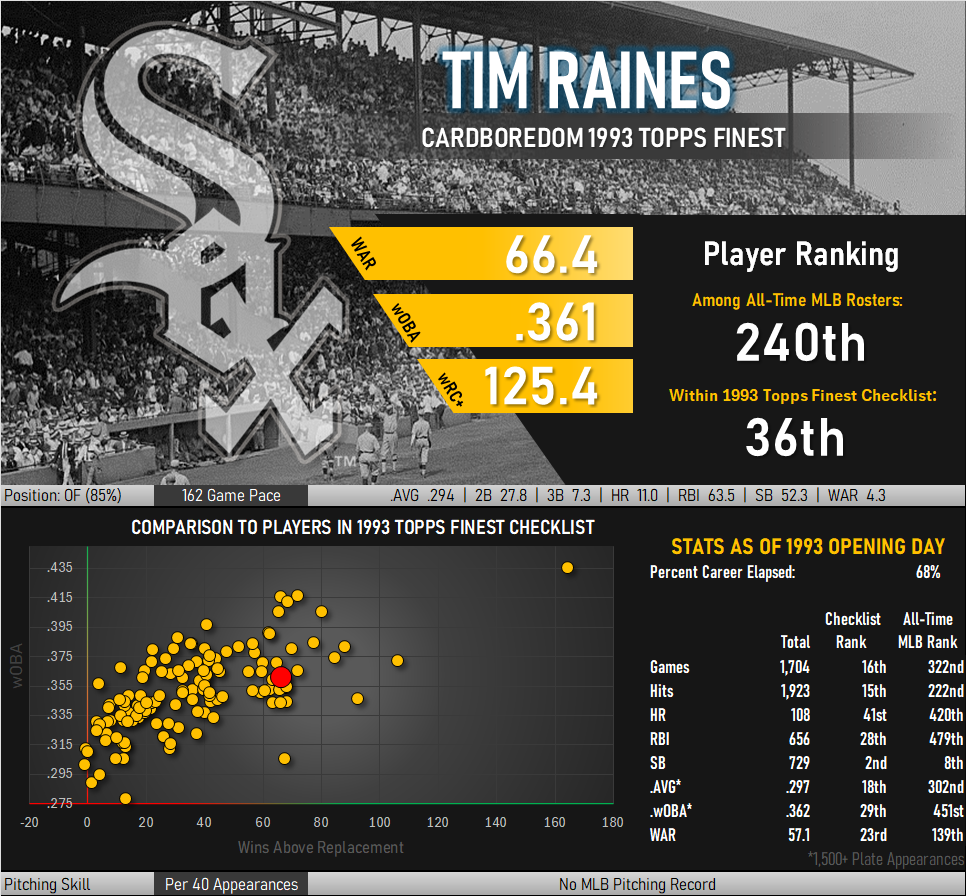
Is Raines a Baseball Card Collector?
When I was young there was a longstanding rumor that you could get Raines’ autograph by mailing him two baseball cards. He would sign one and return it while keeping the duplicate. A more than fair trade in the eyes of a 9-year-old. I dutifully sent a pair of 1991 Score cards bearing his name to Olympic Stadium in Montreal. Neither ever came back. Did I not put the requisite postage for international mail? True. Did I not know Raines had actually moved to Chicago to play for the White Sox? Also true. Had Raines liked the selection of cards so much that he kept both of them? No, but for a year or two I actually thought that to be the case.
The Internet has allowed fans to compare notes on the best way to obtain player signatures through the mail. I know I am not the only one to have heard about Raines’ supposed cardboard “fee” for a signature. Checking a few through-the-mail (TTM) databases, I see ample evidence that such an exchange is not an active part of the Tim Raines autograph experience.
I recently came across a video of Raines himself explaining his relationship with baseball cards. Mike Oz of Old Baseball Cards caught up with Raines in 2018 to open a few packs together. Raines states he did not actively seek out cards on his own but did build a collection from cards people gave him. The rumor works!
Refractor
This was a sneaky-tough card to find for the refractor set. The card is subject to recurring condition issues, notably centering, that make high grade examples difficult to come by. I picked up one that is slightly off-center after encountering another recurring and likely related issue with this card: Many examples seem to be cut smaller than others in the set. My first attempt at getting a Raines card revealed one that was too narrow on a left/right basis. The presence of “skinny” Raines might be one of the reasons why so few have been graded by third parties, leading to a relative shortage of the card compared to other stars in the set. Less than 100 have been reviewed by PSA, giving it a lower population than the ultra-difficult Jimmy Key and Orel Hershiser cards.

Above is a comparison of my first Raines refractor with a regular-sized card. The pair are lined up along their right border, highlighting the size difference on the left. It’s not huge but is plainly present when reviewing cards for potential grading. Pictured below is the replacement I snagged for my set. It has some left/right centering issues but its surface is clean and, most importantly, is full size.
